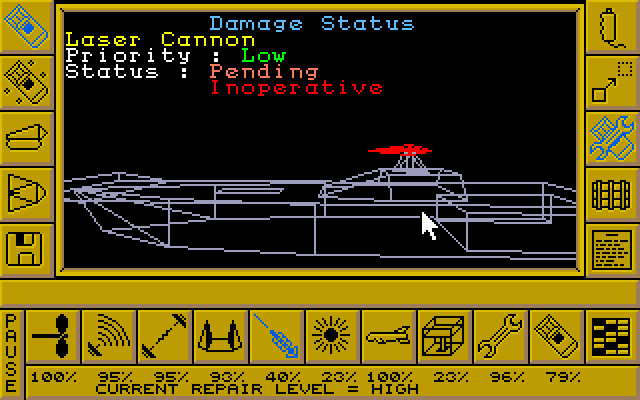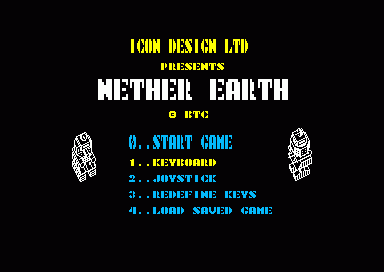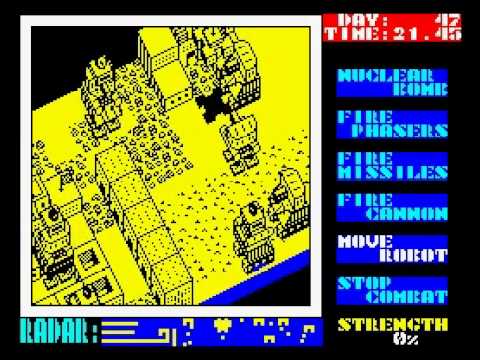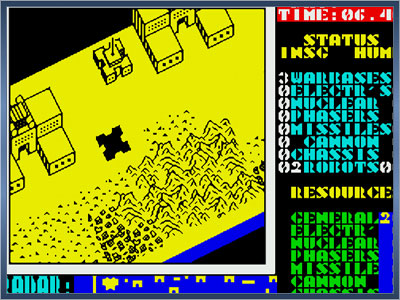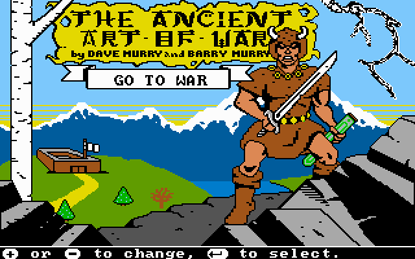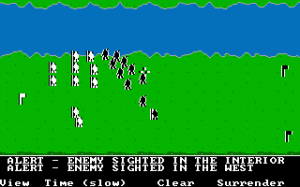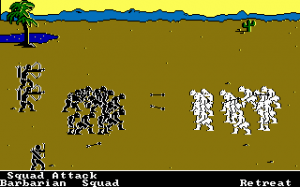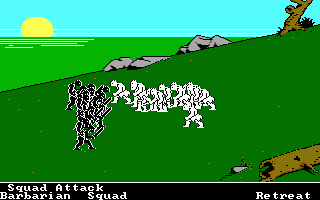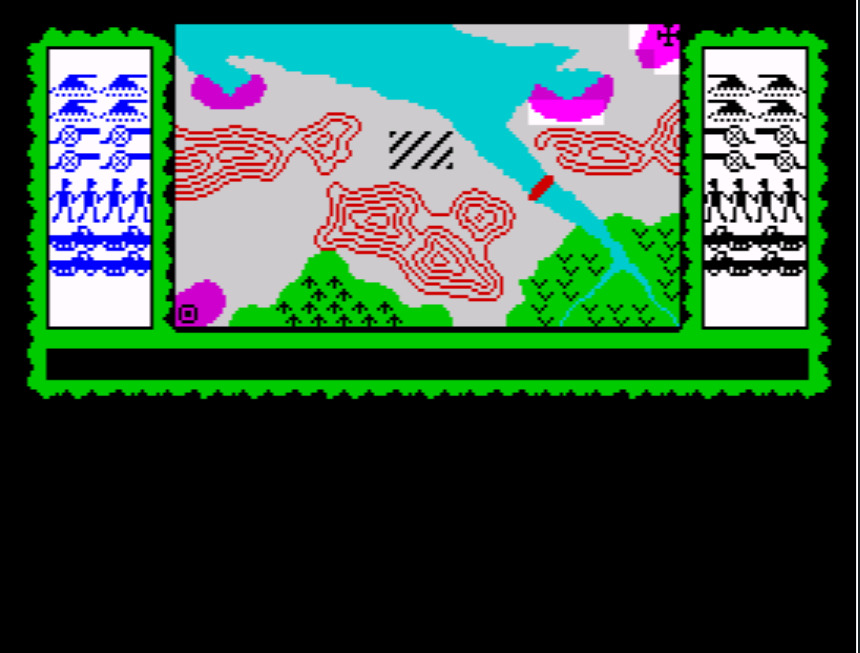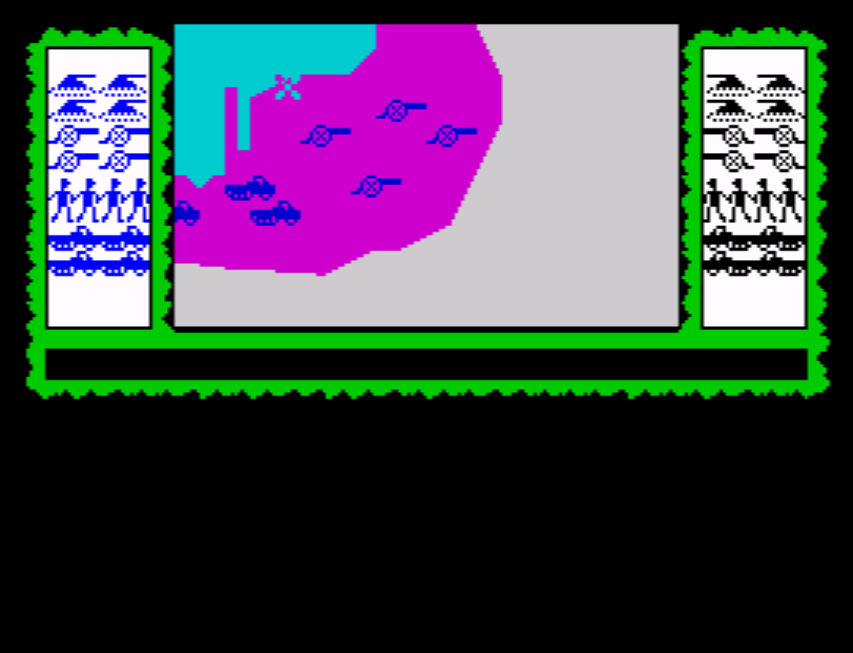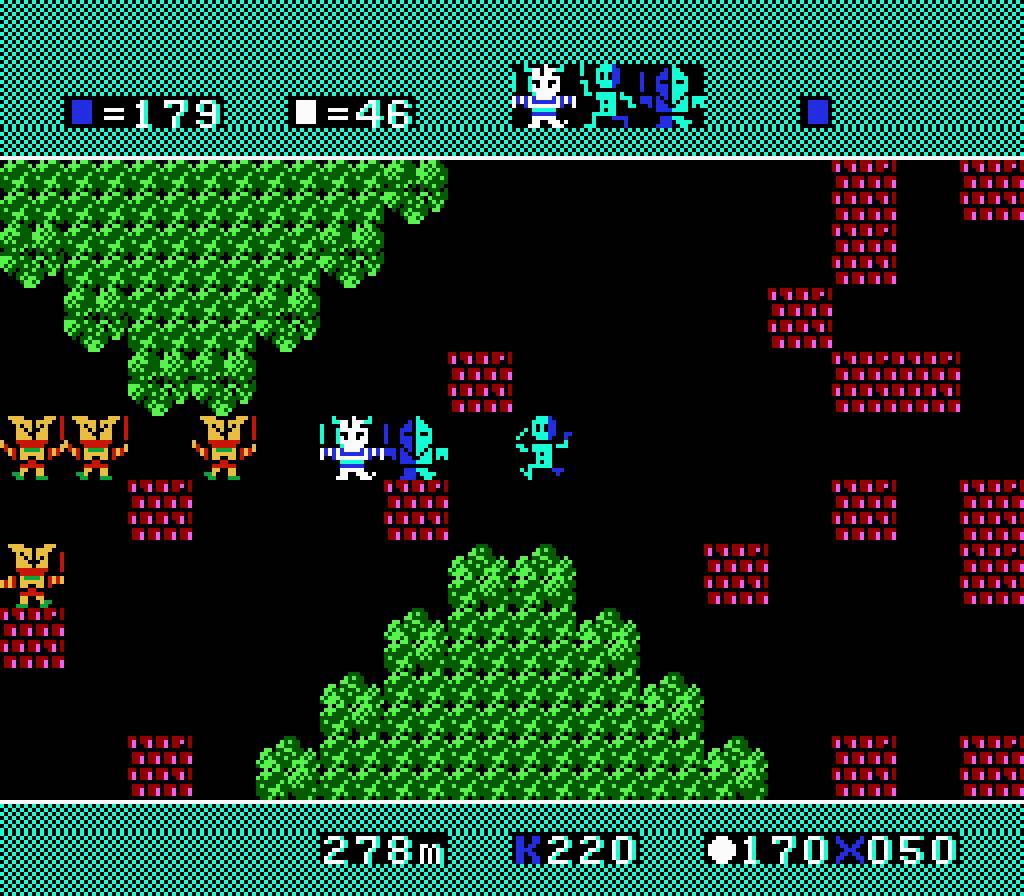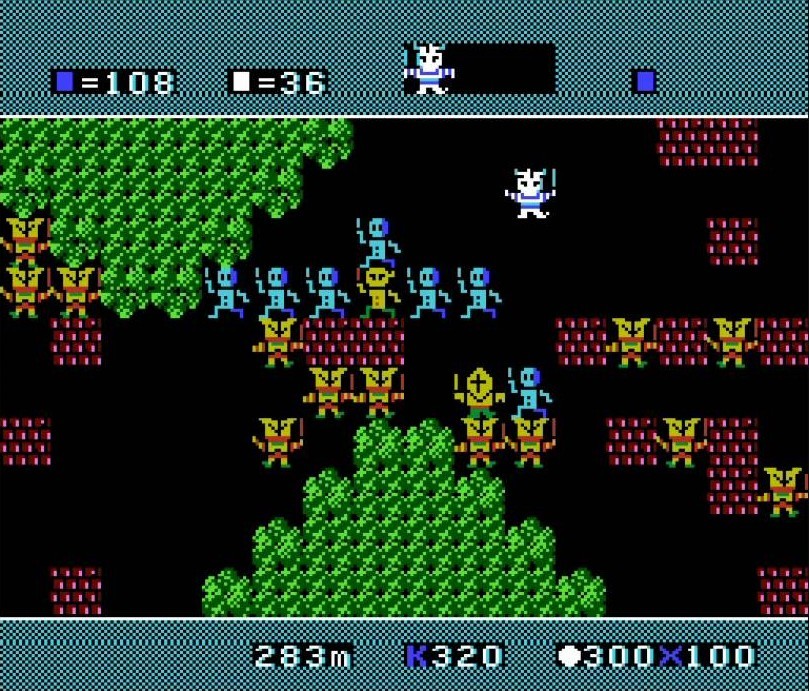Combining Sim and RTS, It flies in the Danger Zone…of Innovation.
Developed in 1988 by Realtime games (Ian Oliver, Andrew Onions and Graeme Baird). Carrier Command is a mix of First Person Simulation and real-time strategy. You are in command of an advanced robotic carrier, and your objective is to destroy the more advanced enemy carrier. In your way, lies an archipelago that you and your opponent must colonize so that you can construct factories for ammo and vehicles, resource gathering, or erecting defensive encampments.
Game Structure
You have two main options. Either play a short skirmish (action game), or play the long campaign mode (strategic game). What differs really is the scale of the map. In the strategic game, It will take much long to engage the enemy, since the map is much bigger, and you start farther apart.
Gameplay
Your carrier is a mobile platform for launching air and amphibious vehicles, firing surface to surface long-range missiles, volleys of precision lasers, ordering transport drones to re-supply, etc… It certainly earns its simulation tag. Its also important to note that most of the time, you will be micromanaging every unit, and every defensive weaponry on the carrier. Everything is managed through CCTVs. When you switch to one of your air units, your camera switches to a first-person view. It does have an autopilot option, but its only for moving to locations. Controlling the unit means steering the unit manually, adjusting its speed, and firing when necessary.
For new players, its an overwhelming experience. Most likely, you will have to read the manual to grasp the interface enough to the point you can even perform an intended action.

Here is the manta loading bay menu. You can load weaponry, repair, build, and deploy them from here.
Thoughts
Its not a game for the casual strategy game lover. It requires dedication to learn just enough to get by. It also requires great micromanaging skills. But it also makes you feel cool as hell. Launching a manta (aircraft) opens up the docking bay, and you see the aircraft slowly rising towards the launching deck… ready for takeoff. And then it zooms straight out of the ship. For its simple vector graphics, it manages to fill the simulation with enough detailed actions, that you truly feel in command of a carrier. Unfortunately, I didn’t play enough for me to actually stand a chance against the AI. So I didn’t get to experience the full depth of the game. Even then, It feels ahead of its time.


